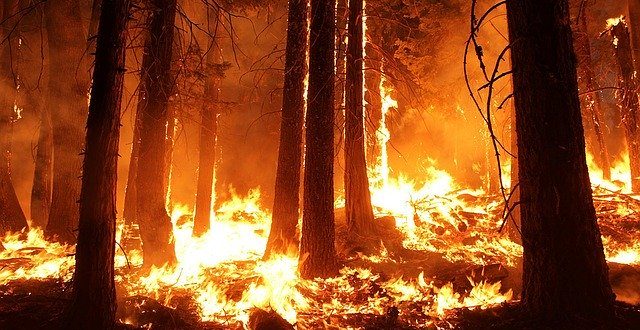Wildfires and Human Involvement
While wildfires can start naturally, the growth of them has, in part, been due to humans. However, the prevention of them has also been linked to human involvement. Here’s a look at human involvement over the years and how it had an effect on fires.
Initial Use of Fires
At first, humans weren’t all that interested in fires and what they could do. The Hebrew, Greek, and Roman soldiers would use them in battles and they’d have their use for offering heat, but people weren’t interested in the uncultivated land where most of the wildfires would occur.
It wasn’t until the 13th century that humans started to look at other uses of fires. This was when some of the earliest accounts about occupational burning had taken place, with regular burning taking place in Germany in 1290.
In Sardinia in the 14th century, the people would use firebreaks for protection against wildfires, and in the 1550s in Spain, King Philip II would discourage sheep husbandry due to the harmful effects of fire.
Cultivation and Foraging
When the Europeans colonized the world, they looked at how the native people would use fires. This led to learning how the Native Americans would use fire for cultivation, as well as signalling and warfare. Tobacco cultivation was possible because of fire, and they would use fire to clear land to improve foraging for grasshoppers, honey, and other items.
In Australia, the Aborigines would use fire to clear ground and help with hunting. It was used for the regeneration of plant food and improve the quality of the soil in the future. Since then, humans have used fire for similar needs around the world.
Improving Wildfire Prevention Techniques
Sadly, there was a point where the use of fire became dangerous. Human interaction caused fire frequency to increase, even though some would naturally occur due to rising temperatures and drought conditions.
This is something that people noticed, too. It did lead to action being taken. In the 20th century, there was a decrease in burning throughout the world, especially around the developed world. This was a time when agriculture was expanded and more livestock would graze on the farmland. On top of that, fire prevention practices were put in place.
For example, some meta-analysis shows that land was burned 17 time more annually in California before 1800 compared to recent decades. However, this may have had a knock on effect as more wildfires are reported and spread further and last longer. While there have been fire prevention methods, the rising carbon emissions have led to more fuel naturally in the air to spread. So, while there are fewer fires, they can last longer.
There is certainly a link between wildfires and human interaction, but not all is bad. Humans have learned more about fires and figured out how to use them effectively and safely as much as possible.

